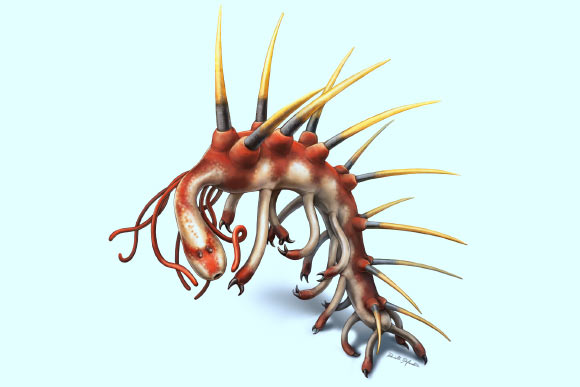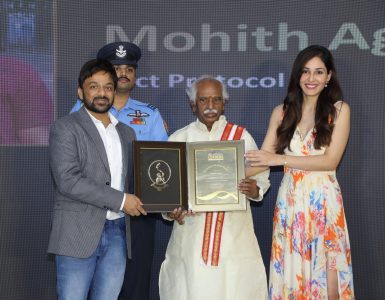 |
| Reconstruction of Hallucigenia sparsa. Image credit: Danielle Dufault. |
The scientists had previously notice a blob at one end of Hallucigenia and through electron microscopy they were not able to make out if it was its head or not. After the discovery of the head and teeth at the other end, it became clear that the blob was a death poo. The lead researcher, Dr. Martin Smith said,” A large balloon-like orb at one end of the specimen was originally thought to be the head, but we can now demonstrate that this wasn’t actually a part of the body at all but a dark stain representing decay fluids or gut contents that oozed out as the animal flattened during its burial.”
This new research will prove to be useful to the others as the scientist will try to reconstruct what the common ancestors of creatures like roundworm, tapeworms etc. looked like. The body structure of Hallucigenia was found to be about 10 to 50 mm long with a thin, tubular body. There were also enormous spines and several limb-like things coming out of its body.
Before the recent findings, the researchers were finding it troublesome to place the creature on the evolution tree. It was thought that it was too weird to be connected to any of the ancestors, but it showed a few features like the ecdysozoans, which are known to include both arthropods and tardigrades like insects, spiders and velvet worms.





















